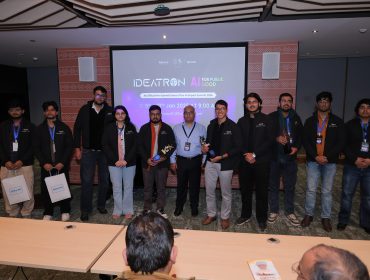The interference of technology in the broadcast industry is bringing a drastic change in the business model right from content creation to user experience affecting the revenue generation at large. However, where these technological advancements in the industry are breaking the barriers of traditional way of watching television, they are becoming a threat to broadcasters in more than one way. Let’s find out how.
Advent of Alternative Media Channels
The ever increasing streaming services are undoubtedly taking over the black boxes of the households. With so many options available, viewers have become picky and this shift in their habit is a huge threat to the old viewership model of limited channels at a fixed price.
Now, viewers have easy access to video channels like Amazon and Netflix for which they can choose a subscription of individual channels like Showtime or HBO, or instead watch programs streamed on YouTube and other free online channels.
Television broadcasters are facing a major threat with the rise of alternative media channels in terms of viewers cancelling their subscriptions and opting for multichannel subscription television services.
Content and Network Security Concern
To add value and retain consumers, pay-tv operators are now offering ‘TV everywhere’ allowing viewers to watch their favourite programs anytime, anywhere on their smart devices. This a risk for broadcasters as they use new media platforms to reach their millennial viewers and they are prone to security threats like hacking, malware, and cyber-attacks.
There are times when viewers also compromise upon security by sharing devices, accounts and personal information to access the content because of which hackers get easy access.
Adding to it, the easy availability of network infrastructure enables redistribution of programs over the Internet illegally bringing in loss across the TV industry worldwide.
Change in Viewer Behavior and Preferences
Users of broadcast industry have become demanding and are not ready to consume just anything which is shown to them. They want both – value for their money and quality content. Keeping this in mind, the traditional content providers need to fight hard while following the digital wave to secure their place in the value chain. For this, they will have to understand customer interests and upsell the right products that cater to their preferences.
Content Protection and Piracy
With internet in use, content has no geographical boundaries. The user is free to create and generate content as per his or her desire. But, here the important thing to note is that there is no reliability and accuracy of such content. This may raise serious issues for broadcasters in terms of legal troubles like copyright issues or defamation in case the authenticity of user-generated content is not verified. The illegal commercial distribution of content originally owned and produced by broadcasters may also lead to loss of revenue
Mismanagement of Content
At present, both users and broadcasters are generating new content every minute because of which it is not being organised properly. This may become a reason to worry in future as the content is not tagged correctly and lack metadata. As a consequence, it becomes impossible for broadcasters to categorise this content for reuse, further, leading to duplication of content.
Broadcast organizations need to organize and tag the content to make sure search becomes easy, accessible and distribution of existing content takes place with ease.
The era of having multiple units for different storage needs is passing as diverse storage products prevent optimum utilization and can be difficult to manage. Opslag FS2 series from Tyrone Systems, consolidates all your storage requirements in a single all-in-one storage solution which is the most flexible solution around. Apart from offering flexibility, it bundles enterprise class features such as extremely high scalability and redundancy along with a very high performance. It can serve the diverse requirements from high performance computing to post-production and broadcast industry












